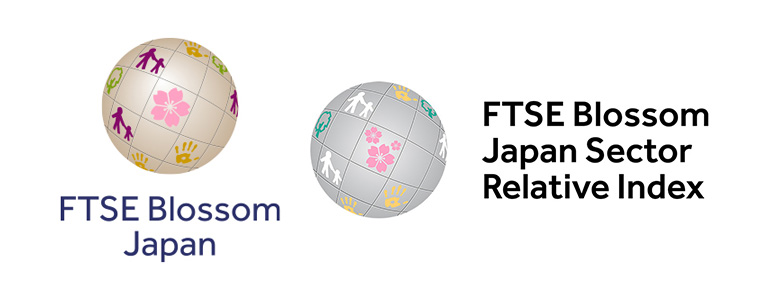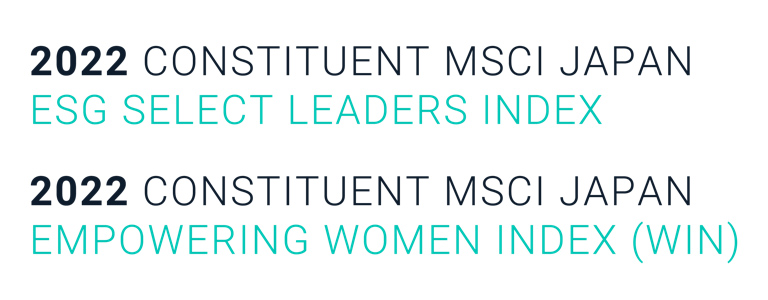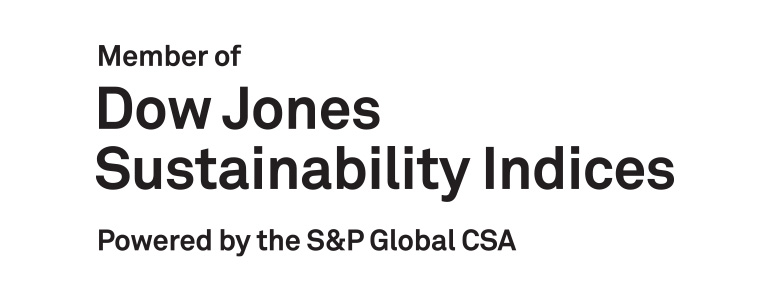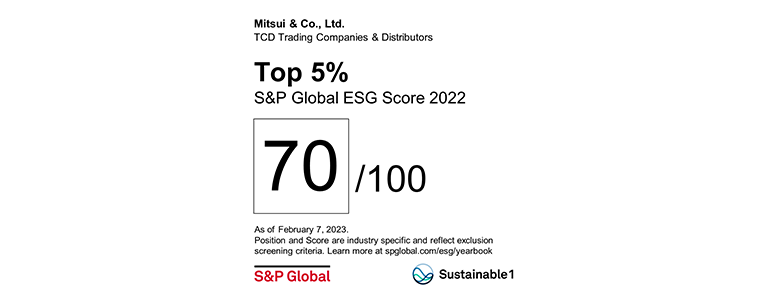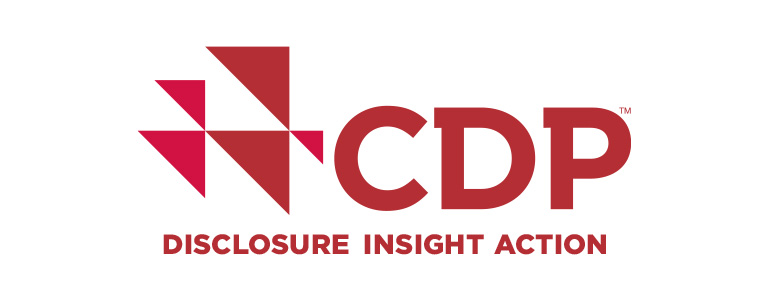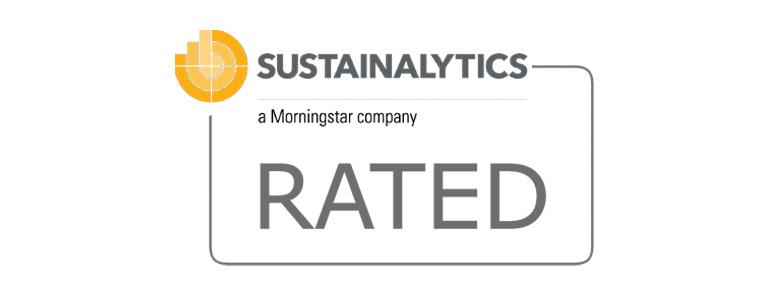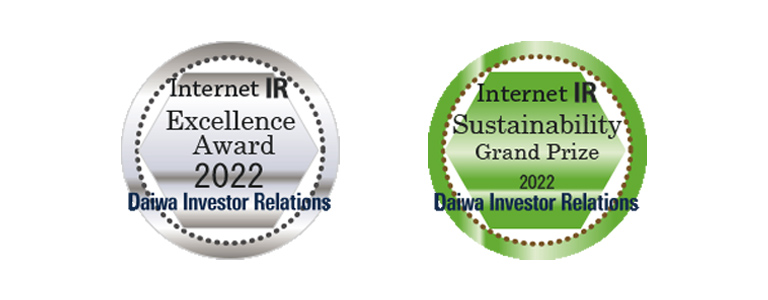Environment
Water Resources
Policies and Basic Approach
Water is the source of all life on earth, as well as being an invaluable resource that is the survival foundation of socio-economics systems. As a consequence of global population growth and development, water resource problems are arising on a global scale.
We recognize that access to safe and sanitary water is an important human right for all people. Also water resources are essential for business continuity as well as for the residents in the communities where we operate. We have stipulated in our Environmental Policy that we will work to conserve water resources by reducing water consumption and improving the efficiency of water resource use.
We are engaged in operations around the world, including in areas subject to high water stress. We recognize that large-scale development and the vast consumption of water resources have caused problems with water resources. Accordingly, we will carry out water risk assessments to respond appropriately to these problems, and work to promote the conservation and sustainable use of water resources. We have positioned water-related businesses as a priority area and will continue to develop them globally, including water desalination, water pumping and water production. We will contribute to solving water-related issues through our businesses.
Approximately 13,000 hectares of Mitsui's Forests, equivalent to around 30% of our company-owned forests, have been officially designated as Water Conservation and Water Safety Forests, helping to secure water resources and mitigate flood damage. We will continue to promote the appropriate development and management of our forests with the aim of providing a strong public benefit.
In addition, we will work to reduce our water use at our offices, for example by treating and reducing effluents.
Goals and Targets
Conservation of Water Resources and Identification of Water Risks
- Conserve water resources related to our businesses, identify water risks in our businesses, and consider countermeasures.
- Utilize ESG due diligence checklists and implement a risk assessment in advance using the water-related checklist items when planning new business or when expanding or withdrawing from operations. Make efforts in advance to understand the risks related to water resources for businesses and investment projects where water resources are particularly important such as beverages, agriculture, and mining in water-stressed regions.
Reduction of Water Usage and Improvement of Utilization Efficiency
- Reduce water consumption at Mitsui & Co. (non-consolidated) to less than the amount used in the previous fiscal year, and improve the efficiency of water use.
For progress against targets, please refer to: Efforts to Reduce Water Use and Recycle Effluents - Improving Water Efficiency in Offices
Sustainability Governance and Oversight
Sustainability Committee
The Sustainability Committee works under the Corporate Management Committee to plan, formulate and provide proposals on basic management policies, business activities, and corporate policies and strategies related to water resources.
The Sustainability Committee is structured so that its activities are appropriately supervised by the Board of Directors, and matters discussed by the Sustainability Committee are regularly discussed and reported to the Corporate Management Committee and the Board of Directors.
| Officer in Charge | Makoto Sato (Representative Director, Senior Executive Managing Officer, Chief Strategy Officer (CSO), Chairperson of the Sustainability Committee) |
|---|---|
| Administrative Office | Corporate Sustainability Div., Corporate Planning & Strategy Div. |
Please refer to the links below for more information on Mitsui's Sustainability Management Framework and the activities of the Sustainability Committee.
ESG Risk Management
We have put in place a system to ensure that we give maximum consideration to the environment and society not only when we start a new business, but also during already under operations and when we withdraw from it.
In addition, we conduct investigations with experts for new business investment projects that are likely to have a significant impact on the environment. For risk assessments in water-stressed areas, in particular, we use the portal site Aqueduct from the World Resource Institute (WRI) to monitor and analyze water risks and water effluent, not only for new business but also for our existing business, with the aim of reducing water-related risks. We also utilize ESG due diligence checklists and conduct risk assessments in advance using the water-related item checklist.
ESG Risk Management: Process of Managing Environmental and Societal Risks
Collaborating with Stakeholders
Participation in Initiatives
We are promoting and expanding our efforts to address water resources through participation in initiatives. Participation in each initiative is decided after confirming that it is consistent with our basic policy and initiatives for water resources.
CDP (Water Security)
Since 2015, we have responded to the questionnaire from CDP Water Security, a global disclosure program for corporate information on water risks. Based on our response to the questionnaire carried out in 2022, we received the score "B" in relation to Water Security.
Japan Business Federation (Keidanren)
- Committee on Responsible Business Conduct & SDGs Promotion, which works to make the Charter of Corporate Behavior well known, disseminate and promote "Society 5.0 for SDGs", and promote corporate social contribution activities
- Committee on Energy and Resources, which promotes energy policies that provide a balance of S+3E (Safety + Energy Security, Economic Efficiency, and Environment)
- Committee on Environment and Safety, which works on countermeasures to deal with climate change, formation of a circular society, and improvements in environmental regulations and systems
Collaborating with NGOs/NPOs
Support through an NPO for the Development of a Rainwater Reuse System to Supply Safe Drinking Water

In mountainous areas and on remote islands in Bohol Province in the Philippines, it is difficult to access safe drinking water and water stress is high. Water from wells in coastal areas and on remote islands is unsuitable for drinking because of seawater contamination. Boat trips to buy water are a part of everyday life for island residents, imposing a heavy burden in terms of both costs and time. The Mitsui & Co. Environment Fund has provided a grant to Ikaw Ako, an NPO to fund an initiative to provide rainwater storage and treatment facilities so that residents in this region can have easier access to safe drinking water. To create sustainable water supply systems, tanks with the optimal size for each community will be designed and built by the residents, allowing the facilities to be maintained and managed locally. Through this project, we are helping to solve the challenges of water-stressed regions.
Initiatives
Water Withdrawal in Water-Stressed Regions
The following table shows the amount of water consumed by our business sites in areas identified as having high or very high levels of water stress, using Aqueduct, a water risk map of the world developed by the World Resources Institute (WRI), an international environmental NGO.
*Countries included: Out of the 189 countries included in the ranking of countries with high risk in water-stressed regions, the following 18 countries have been identified as water stress areas related to our business: Qatar, Iran, Kuwait, Saudi Arabia, UAE (United Arab Emirates), India, Oman, Chile, Morocco, Belgium, Mexico, Spain, Algeria, Turkey, Nigeria, Portugal, Egypt and Italy. In some cases, data was obtained directly from the site of the business, while in other cases, data was obtained only from the location of the business's headquarters (parent company/SPC).
**Scope of data collection: Domestic and foreign consolidated companies, Un-incorporated JV
Please scroll horizontally to look at table below.
| FY Mar/2020 | FY Mar/2021 | FY Mar/2022 | ||
|---|---|---|---|---|
| High risk (40-80%) | Locations | 7 | 8 | 9 |
| Volume of water withdrawn (thousand m3) | 10 | 14 | 99 | |
| Very high risk (>80%) | Locations | 5 | 5 | 4 |
| Volume of water withdrawn (thousand m3) | 837 | 813 | 1,099 |
Initiatives in Water-Stressed Regions(1) Long-term Supply of Water through Power Generation and Desalination Independent Water and Power Producer (IWPP) Project in Qatar
Mitsui is participating in the Ras Laffan C power and water desalination (IWPP) project in Ras Laffan Industrial City, located 80 km north of Qatar's capital of Doha. The project was initiated in response to an increase in demand for electric power and water as a result of Qatar's rapid economic growth. Qatar uses seawater desalination to produce 99.9% of its water supplies. In this project, energy efficiency will be optimized through the use of a power generation and desalination process designed to utilize waste heat from power generation. With a power generation capacity of 2,730 MW and desalination capacity of 290,000 tons per day, this project will operate seawater desalination facilities for a period of 25 years starting in 2011. It will supply water and electric power to the Qatar General Electricity and Water Corporation (Kahramaa), accounting for around 24% of Qatar's electricity supply and approximately 14% of its water supply.
Initiatives in Water-Stressed Regions(2) Water Desalination and Pumping Business for Copper Mines in Chile
Chile accounts for approximately 30% of the world's copper production and is a thriving copper mining region. The country's copper mining operations use large amounts of water, especially in the north of Chile where there is a high concentration of mines. Water stress is high in this region as a whole, with growing concerns about resource shortages. Mitsui has invested in a seawater desalination and pumping service operation for the Spence Mine, a 100% subsidiary of BHP, a major mineral resources company, through Caitan S.p.A., established as a 50-50 joint venture with Técnicas de Desalinazación de Aguas, S.A. (Tedagua) under the ACS Group of Spain. Caitan S.p.A. will construct, own and operate a water desalination plant and a 150 km water pumping facility in the province of Antofagasta in the north of Chile to supply fresh water to copper mine operator Spence over a 20-year period.
In the north of Chile, demand is expected to grow at an annual rate of around 14% as the region as a whole becomes increasingly concerned about water shortages. We will contribute to Chile's development by tapping into the country's rapidly growing demand for water infrastructure and further developing related infrastructure, while addressing the issue of water shortages through our business.
Water Supply and Sewage Infrastructure Business
(As of March 2022)
| Business | Country | Processing Capacity(Total Capacity) Unit: thousand m3/day |
|---|---|---|
| Tap Water Supply | Thailand | 1,028 |
| Tap Water Supply | Mexico | 130 |
| Sewage Treatment Plant | Mexico (4 sites) | 4,620 |
| Power and Water Desalination | Qatar | 290 |
| Desalination and Conveyance | Chile | 90 |
Efforts to Reduce Water Consumption and Improve the Efficiency of Use
Efforts to Care for Water Resources During Shale Gas Extraction
Through its investee, Mitsui E&P USA LLC, Mitsui is engaged in the Marcellus shale gas development and production project and the Eagle Ford shale oil/gas development and production project. The oil and gas are extracted using hydraulic fracturing (fracking), and Mitsui E&P USA gives due care to water resources by ensuring that water for hydraulic fracturing (fracking water) is properly used (including the recycling of wastewater), managed, and discharged.
Efforts to Improve Water Usage Rates in the Copper Business
We are engaged in the copper mining business in Chile. Chile is a high-risk region in terms of water stress levels, but because the operations require a large amount of water, we are promoting the introduction of technologies to maximize the efficiency of water use in the operating processes of each mine and are working to reduce the amount of new water withdrawal. At the Los Bronces copper mine (located in the Capital Province of Chile), in which we are engaged together with Anglo American Plc, we reached a water reuse rate of 85% in 2020, mainly due to efforts to extract and reuse water from tailings. Also, at the Collahuasi copper mine (located in the Tarapaca province), the second largest copper mine in Chile by production volume, with Anglo American and Glencore as partners, the water reuse rate reached level of 76% in FY Mar/2020. In addition, we are planning to build a seawater desalination plant in the future. We will continue to contribute to the development of the country through our business while making efforts to conserve water resources.
Please scroll horizontally to look at table below.
| 2019 | 2020 | ||
|---|---|---|---|
| Los Bronces Copper Mine (*) | Water reuse rate (%) | 78% | 85% |
| Collahuasi Copper Mine | Water reuse rate (%) | 84% | 76% |
*For Los Bronces Copper Mine, the figures include tailings water procured from third parties, and treated sewage, etc. (Recycle + Reuse).
Water Withdrawals in Projects
Water withdrawal intensity for copper concentrate production at Collahuasi mine
Please scroll horizontally to look at table below.
| Scope | Unit (annual average) |
2019 | 2020 | 2021 | |
|---|---|---|---|---|---|
| Water withdrawal intensity (annual average) |
Water withdrawal per ton of ore processed at the copper concentrate processing plant |
m3/t |
0.51 | 0.53 | 0.54 |
Water withdrawal intensity in sugar manufacturing
KASET PHOL SUGAR LIMITED
Please scroll horizontally to look at table below.
| Unit (annual average) |
FY Mar/2020 | FY Mar/2021 | FY Mar/2022 | |
|---|---|---|---|---|
| Per ton of sugar produced (annual average) |
m3/t |
2.7 | 6.9 | 4.0 |
Water withdrawal intensity in livestock production and processing
Prifoods Co., LTD.
Please scroll horizontally to look at table below.
| Unit (annual average) |
FY Mar/2020 | FY Mar/2021 | FY Mar/2022 | |
|---|---|---|---|---|
| Per ton of chicken meat processed (annual average) |
m3/t |
13.2 | 13.0 | 12.8 |
Efforts to Reduce Water Use and Recycle Effluents - Improving Water Efficiency in Offices
At the Head Office, we use 100% recycled drainage water for toilet flushing in order to promote reduction in water consumption. In addition, we have set the goal of improving water use efficiency by reducing the amount of water used at the Head Office and at our own buildings (Osaka) to less than the amount used in the previous fiscal year.
Please scroll horizontally to look at table below.
| Progress against targets | Scope | Unit | FY Mar/2020 | FY Mar/2021 | FY Mar/2022 | Achievement Status |
|---|---|---|---|---|---|---|
| Water Withdrawal | The office buildings owned by Mitsui & Co. as a non-consolidated entity (Head Office, Osaka Office, Chubu Office)* |
thousand m3 |
61 | 25 | 57 | Significantly exceeded targets for FY Mar/2021, impacted by the prevalence of teleworking due to the COVID-19 pandemic. However, the following year, FY Mar/2022, saw a year-on-year increase due to increased office attendance. |
| Intensity | The office buildings owned by Mitsui & Co. as a non-consolidated entity (Head Office, Osaka Office, Chubu Office)* (per employee) |
m3/employee |
15.69 | 6.47 | 12.76 | Significantly exceeded targets for FY Mar/2021, impacted by the prevalence of teleworking due to the COVID-19 pandemic. However, the following year, FY Mar/2022, saw a year-on-year increase due to increased office attendance. |
*For FY Mar/2020 and FY Mar/2021, company-owned buildings include the Chubu Office (Nagoya); from FY Mar/2022, the Chubu Office building is excluded due to relocation to a leased building.
Costs Associated with Water-Related Risks:
Water recycling cost at buildings owned by Mitsui & Co. as a non-consolidated entity (Head Office, Osaka Office): 5 million Japanese Yen (FY Mar/2022)

